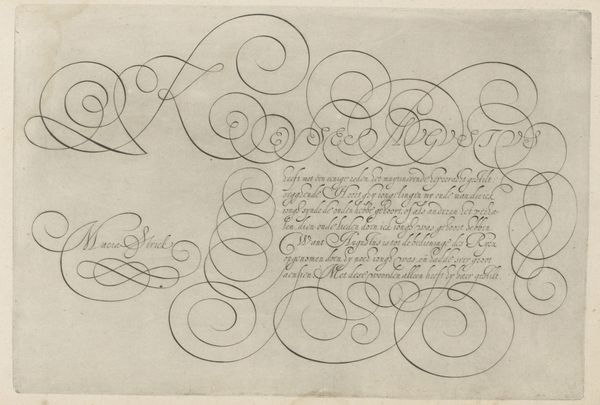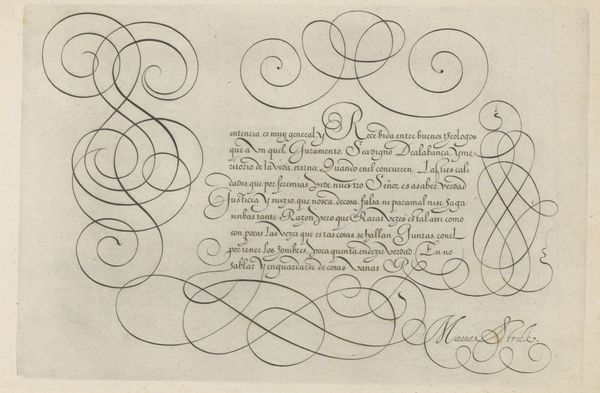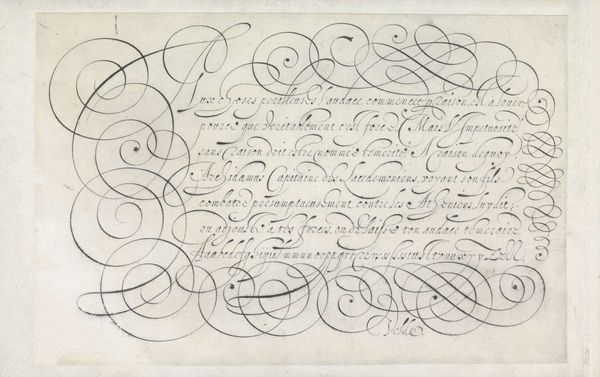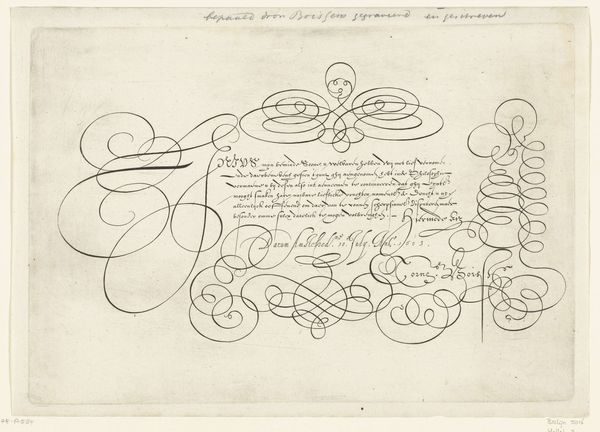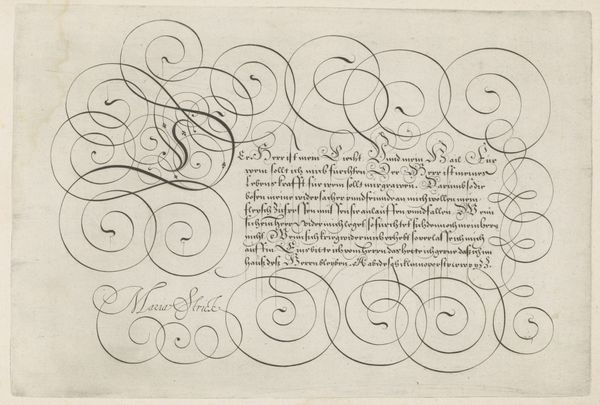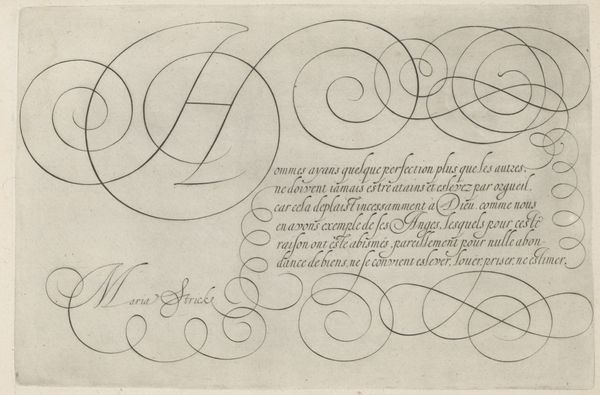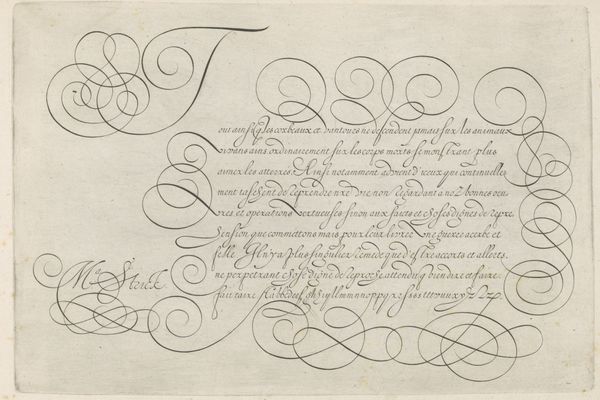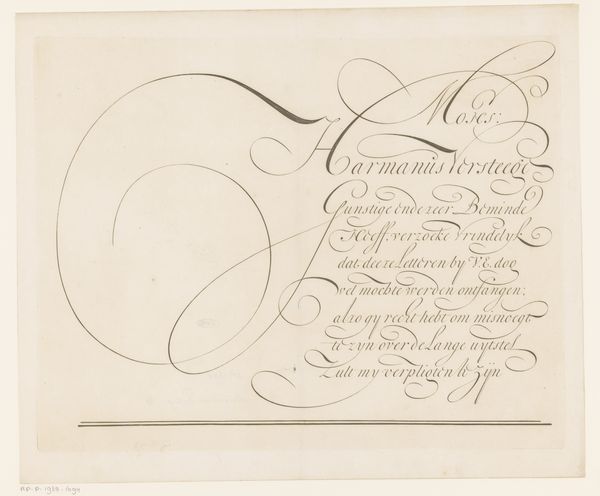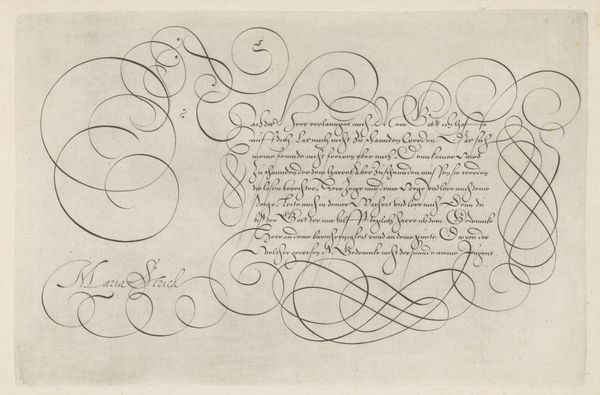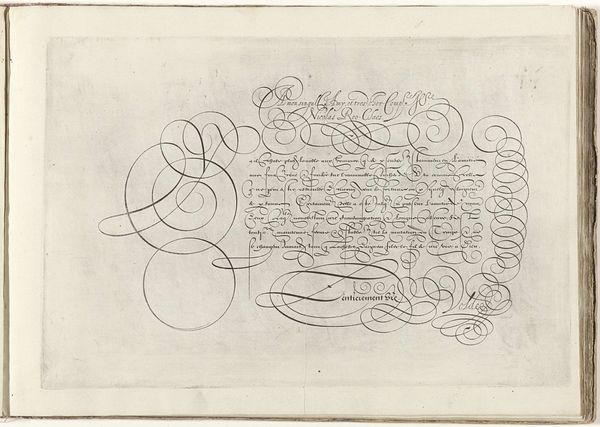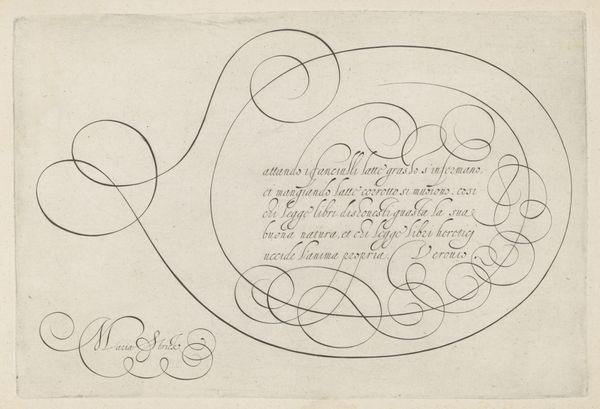
Kalligrafie: ‘Waerde Sone daer is nuet nutzamer omme te komen tot het gemeine als tot particuliere goeden….’ Possibly 1612 - 1616
0:00
0:00
drawing, graphic-art, print, paper, typography, ink
#
drawing
#
graphic-art
#
hand-lettering
#
dutch-golden-age
# print
#
hand lettering
#
paper
#
typography
#
ink
#
calligraphy
Dimensions: height 192 mm, width 276 mm
Copyright: Rijks Museum: Open Domain
This calligraphic print was made in 1612 by an anonymous artist, its medium most likely pen and ink on paper. Its flowing script and ornate flourishes are typical of the period, and the text it presents encourages a transition from private to common good. This emphasis on the common good connects to the early 17th-century Dutch Republic, a time of burgeoning trade, new wealth, and evolving social structures. The country's newly-formed institutions and civic codes aimed to harmonize individual interests with the collective welfare of the republic. The print’s visual style—an elaborate dance of lines—mirrors the complex negotiations of the time. It subtly elevates the social role of the scribe, a figure who translated abstract ideas of governance into tangible documents. Understanding this artwork requires delving into the history of Dutch civic life, economic policy, and the role of public art in shaping social norms. Researching archives, pamphlets, and the records of early civic institutions will help uncover the intricate web of social forces that gave rise to this calligraphic work. The meaning of art is contingent on social and institutional context.
Comments
No comments
Be the first to comment and join the conversation on the ultimate creative platform.
